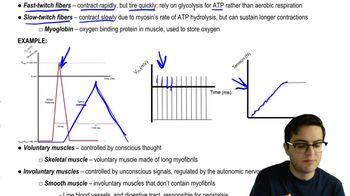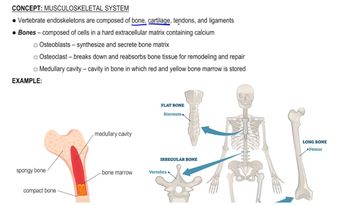Table of contents
- 1. Introduction to Biology2h 42m
- 2. Chemistry3h 40m
- 3. Water1h 26m
- 4. Biomolecules2h 23m
- 5. Cell Components2h 26m
- 6. The Membrane2h 31m
- 7. Energy and Metabolism2h 0m
- 8. Respiration2h 40m
- 9. Photosynthesis2h 49m
- 10. Cell Signaling59m
- 11. Cell Division2h 47m
- 12. Meiosis2h 0m
- 13. Mendelian Genetics4h 44m
- Introduction to Mendel's Experiments7m
- Genotype vs. Phenotype17m
- Punnett Squares13m
- Mendel's Experiments26m
- Mendel's Laws18m
- Monohybrid Crosses19m
- Test Crosses14m
- Dihybrid Crosses20m
- Punnett Square Probability26m
- Incomplete Dominance vs. Codominance20m
- Epistasis7m
- Non-Mendelian Genetics12m
- Pedigrees6m
- Autosomal Inheritance21m
- Sex-Linked Inheritance43m
- X-Inactivation9m
- 14. DNA Synthesis2h 27m
- 15. Gene Expression3h 20m
- 16. Regulation of Expression3h 31m
- Introduction to Regulation of Gene Expression13m
- Prokaryotic Gene Regulation via Operons27m
- The Lac Operon21m
- Glucose's Impact on Lac Operon25m
- The Trp Operon20m
- Review of the Lac Operon & Trp Operon11m
- Introduction to Eukaryotic Gene Regulation9m
- Eukaryotic Chromatin Modifications16m
- Eukaryotic Transcriptional Control22m
- Eukaryotic Post-Transcriptional Regulation28m
- Eukaryotic Post-Translational Regulation13m
- 17. Viruses37m
- 18. Biotechnology2h 58m
- 19. Genomics17m
- 20. Development1h 5m
- 21. Evolution3h 1m
- 22. Evolution of Populations3h 52m
- 23. Speciation1h 37m
- 24. History of Life on Earth2h 6m
- 25. Phylogeny2h 31m
- 26. Prokaryotes4h 59m
- 27. Protists1h 12m
- 28. Plants1h 22m
- 29. Fungi36m
- 30. Overview of Animals34m
- 31. Invertebrates1h 2m
- 32. Vertebrates50m
- 33. Plant Anatomy1h 3m
- 34. Vascular Plant Transport1h 2m
- 35. Soil37m
- 36. Plant Reproduction47m
- 37. Plant Sensation and Response1h 9m
- 38. Animal Form and Function1h 19m
- 39. Digestive System1h 10m
- 40. Circulatory System1h 57m
- 41. Immune System1h 12m
- 42. Osmoregulation and Excretion50m
- 43. Endocrine System1h 4m
- 44. Animal Reproduction1h 2m
- 45. Nervous System1h 55m
- 46. Sensory Systems46m
- 47. Muscle Systems23m
- 48. Ecology3h 11m
- Introduction to Ecology20m
- Biogeography14m
- Earth's Climate Patterns50m
- Introduction to Terrestrial Biomes10m
- Terrestrial Biomes: Near Equator13m
- Terrestrial Biomes: Temperate Regions10m
- Terrestrial Biomes: Northern Regions15m
- Introduction to Aquatic Biomes27m
- Freshwater Aquatic Biomes14m
- Marine Aquatic Biomes13m
- 49. Animal Behavior28m
- 50. Population Ecology3h 41m
- Introduction to Population Ecology28m
- Population Sampling Methods23m
- Life History12m
- Population Demography17m
- Factors Limiting Population Growth14m
- Introduction to Population Growth Models22m
- Linear Population Growth6m
- Exponential Population Growth29m
- Logistic Population Growth32m
- r/K Selection10m
- The Human Population22m
- 51. Community Ecology2h 46m
- Introduction to Community Ecology2m
- Introduction to Community Interactions9m
- Community Interactions: Competition (-/-)38m
- Community Interactions: Exploitation (+/-)23m
- Community Interactions: Mutualism (+/+) & Commensalism (+/0)9m
- Community Structure35m
- Community Dynamics26m
- Geographic Impact on Communities21m
- 52. Ecosystems2h 36m
- 53. Conservation Biology24m
47. Muscle Systems
Musculoskeletal System
Problem 12b`
Textbook Question
Distance runner Paula Radcliffe has won dozens of long-distance races and held the women's world record for the marathon since 2003. Scientists, trainers, and athletes alike have wondered about the extent to which muscle structure and function contribute to success in athletes such as Radcliffe.
What makes elite distance runners so good?
Are their muscles somehow different from those of less successful athletes and non-athletes?
Predict who would likely have a greater proportion of fast glycolytic fibers in their gastrocnemius (calf) muscle—an elite distance runner or an elite sprinter. Explain.
 Verified step by step guidance
Verified step by step guidance1
Begin by understanding the types of muscle fibers: fast glycolytic fibers and slow oxidative fibers. Fast glycolytic fibers are designed for quick, powerful bursts of energy and fatigue quickly, while slow oxidative fibers are more efficient for endurance and sustained activity.
Consider the physiological demands of distance running versus sprinting. Distance running requires sustained energy output over a long period, relying heavily on slow oxidative fibers for endurance. Sprinting, on the other hand, requires short bursts of high-intensity energy, utilizing fast glycolytic fibers.
Predict which type of athlete would have a greater proportion of fast glycolytic fibers. Since sprinters need quick, explosive power, they are likely to have a higher proportion of fast glycolytic fibers compared to distance runners.
Explain why elite distance runners, like Paula Radcliffe, would have a greater proportion of slow oxidative fibers. These fibers are more efficient for aerobic respiration, providing the endurance needed for long-distance events.
Conclude that muscle fiber composition is a key factor in athletic performance, with sprinters having more fast glycolytic fibers for speed and distance runners having more slow oxidative fibers for endurance.
 Verified video answer for a similar problem:
Verified video answer for a similar problem:This video solution was recommended by our tutors as helpful for the problem above
Video duration:
2mPlay a video:
Was this helpful?
Key Concepts
Here are the essential concepts you must grasp in order to answer the question correctly.
Muscle Fiber Types
Muscle fibers are categorized into different types based on their contraction speed and metabolic processes. Fast glycolytic fibers, also known as Type IIb fibers, are designed for quick, powerful bursts of energy and rely on anaerobic metabolism. In contrast, slow oxidative fibers, or Type I fibers, are more suited for endurance activities and utilize aerobic metabolism, making them ideal for long-distance running.
Recommended video:
Guided course

Muscle Fibers and Sarcomeres
Gastrocnemius Muscle Function
The gastrocnemius muscle, located in the calf, plays a crucial role in running by facilitating plantar flexion of the foot. It contains a mix of muscle fiber types, which can vary based on an individual's training and genetic predisposition. Elite sprinters typically have a higher proportion of fast glycolytic fibers in their gastrocnemius, enabling explosive speed, while distance runners have more slow oxidative fibers for sustained endurance.
Recommended video:
Guided course

Functional Groups
Athletic Performance and Muscle Composition
Athletic performance is significantly influenced by the composition of muscle fibers, which determines an athlete's capability for speed or endurance. Elite sprinters benefit from a greater proportion of fast glycolytic fibers, allowing rapid energy release for short bursts. Conversely, elite distance runners excel due to a higher proportion of slow oxidative fibers, supporting prolonged activity and efficient energy use over long distances.
Recommended video:
Guided course

Soil Composition

 2:08m
2:08mWatch next
Master Muscle System and Skeleton with a bite sized video explanation from Jason
Start learningRelated Videos
Related Practice




















































